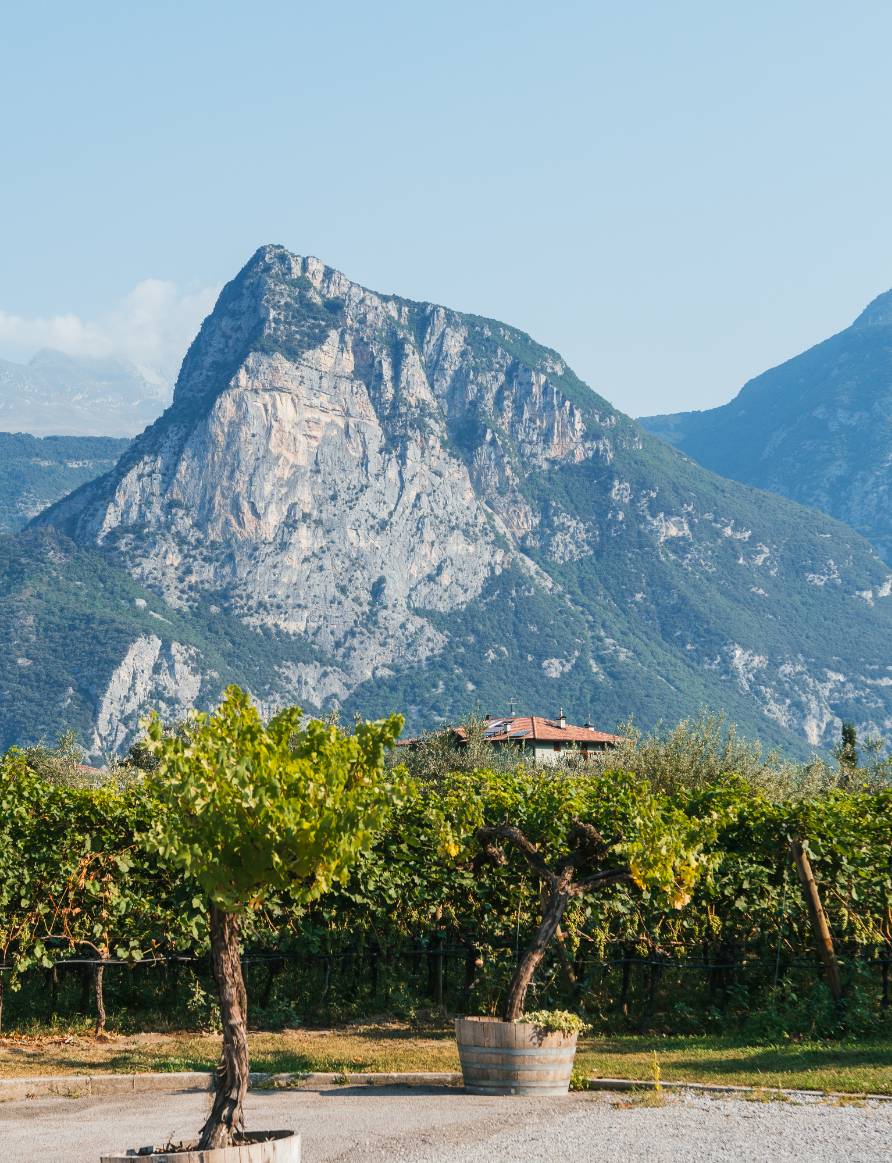
The Territory
The ‘Valle dei Laghi’ extends from the threshold of Terlago to the ‘Lower Sarca’ (river) in a unique natural scenery composed of lakes, villages, ancient castles, mountains and hills, to guide the visitor through the South. The Valley enjoys a unique climatic variety which, changing from the Alpine climate to the Mediterranean’s one, offers an ideal alternation of natural environments. The show offered by this breathtaking landscapes is an historical and naturalistic mosaic of inestimable wonder that can welcome the visitor in every season of the year. We are looking at a suggestive scenery consisting of seven lakes: Lake Cavedine, Lake Toblino, Lake Santa Massenza, Lake Lamar, Lake Santo, Lake Terlago and Lake Lagolo.
Lago di Lamar

Lago Santo

Lago di Terlago
Lago di Lagolo

Lago di Cavedine

Lago di Toblino

Lago di Santa Massenza
There is no shortage of ancient castles with their load of inevitable charm between history and legends. A wide variety of characteristic villages whose houses and alleys can tell better than any book the tradition and culture that have passed through and still inhabit them today. And again, the mountains and hills that draw a landscape to be admired for hours, in its seasonal changes, at sunrise or sunset.
Geographically we are situated within the western Trentino ‘Prealps’, with a prevalent presence of carbonate sedimentary rocks. The Valle dei Laghi is an area enclosed between the long Baldense mountain chain and the chains of Monti Stivo, Bondone, Misone, Brento, Casale, Gazza and Paganella.
The hydrographic peculiarity of this area, the name itself says, is the presence of numerous lakes, from the most heterogeneous origins. Some were created by the barrage of postglacial landslides (Cavedine) or alluvial conoids (Toblino and Santa Massenza), others are due to the glacial excavation valley (Santo and Lamar), some have intermorenic origins (Lagolo) or are glacio-carsici (Terlago). The lakes, therefore, are the true identity of this part of Trentino and determine an environmental and natural heritage of enormous value, undoubtedly to be safeguarded with responsibility, considering the extreme biodiversity present in many of these areas, including those covered by the European Natura 2000 network.

In terms of climate, the main features insert the area in a prealpine climate but the presence of Lake Garda leads to almost Mediterranean conditions of which one can find the obvious traces in both flora and fauna. The low altitude, the constant exposure to southern climate influences and the thermoregulatory action of Lake Garda allow mild winters and hot summers
Geologically, the Valley offers a large presence of fractured and dissolvable limestone, with numerous karst areas, scarcity of water at high altitude and an extensive constellation of sinkholes and caves. The consequences of the last glaciations (between 80,000 and 12,000 years ago) evidently shaped the reliefs and dug deep incisions between valley basins and thresholds, terraces and glacial wells, gorges and waterfalls. We face a patient work of millions years, done with such constancy and precision to make the results still readable today. The sedimentary and magmatic effusive rocks of today and the various alluvial, glacial and gravitational debris deposits tell us of ancient seas, some submerged volcano and huge expanses of ice.
In terms of Vegetation, the one of the Valley floor is the one that highlights the most important changes. In the alluvial areas, which clearly present their agricultural vocation, we can also find the greatest number of settlements and infrastructures. In the past there used to be forests and swamps, today there are urban and industrial areas, crops and meadows, leaving only little space for the original environments, which should instead be carefully protected. The valley is dotted with dry stone walls and humid areas, in which Molinieti (wet meadows consisting mainly of the grass Molinia cerulea), reeds, alders and willows find their natural habitat. On the base slopes, caressed by the sun, we find Manna Ash, Downy Oak, Black Hornbeam and Scotano which in autumn give the landscape truly special colours. In some areas there is also the Holm Oak, whose life is facilitated by the presence of Lake Garda which attenuates temperature variations and it allows some Mediterranean shrubs to grow. We are therefore faced with a countryside landscapeeu decorated with olive groves and holm oaks as well as meadows. Going up in altitude, in the mountain range, beech forests make room for themselves while even higher up there are Silver Fir and Larch. In the rocky strip the only elements capable of surviving at those altitudes are rocky grasslands and shrubs. The Mediterranean style mentioned above is affirmed in the Valley and in the area of Toblino up to Vezzano, where there are numerous settlements of Holm Oak. In other areas one can also find a mix of Oak, Orniello, Hornbeam, Euphorbia, Holly, wild plum, etc. The Elm, the Maple and the Dogwood settle above 1000 metres, while the Lime, the Birch and the Hazel trees are still on the mountain plane, in addition to the beech. Above Vezzano and Padergnone the eye falls on woods of Hornbeam, Holm Oak and Pine; towards Ciago, Margone, Ranzo and Calavino, instead, the presence of Black Pine dominates the landscape.
The Valle dei Laghi, western Trentino Prealps, has over 2000 species of higher plants, thanks to geographical and environmental factors that make the area really special. The wetlands, the gorges, the under rocks and the arid meadows constitute an extraordinary territorial Biodiversity. The peculiarities of this area are also demonstrated by the presence of numerous habitats of ‘Natura 2000‘ Network, with natural reserves both provincial and local.
The Diversity of the landscape is also accompanied by the Diversity of Fauna, vertebrate and not only. Lakes, canals, pools and ponds are home to fish (Rainbow Trout, lake Trout, Tench, Pike, Bluegill, Escarpment, etc.) and numerous species of amphibians (Salamander, common Toad, green frogs, etc.) some of which are greatly threatened by the presence of the Yellow-bellied Howl. There are also many reptiles in the territory, including the western Lizard, the wall Lizard, the Dart, the Collared Snake, the common Viper and others. Canals, agricultural ditches and cultivated fields can sometimes constitute an obstacle for the fauna, other times important opportunities. In fact, in the ditches there are molluscs, beetles, ephemeropters and, where the environment has been preserved, even freshwater Shrimps.
Vineyards and Orchards have artificially impoverished the environment but the new agricultural protocols introduced at the end of the ’80s have allowed to witness the return of a more strong presence of some common agricultural species, including the Blackbird, the Thrush Chaffinch, Goldfinch, Swallow, small Shrike and many others. Environmental Biodiversity is generally more marked where there is the presence of structural elements, such as dry stone walls, old buildings, hedges and irrigation ditches. The climatic peculiarity of the area shows the presence of nesting and wintering birds such as the Grey Heron (which here forms the largest colony in the Province) and the Brunette. Finally, it is important to mention the now stable presence of the Brown Bear.




